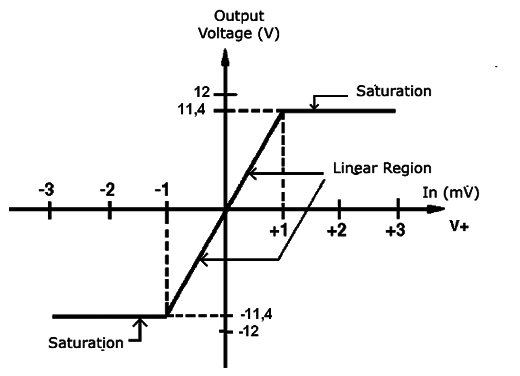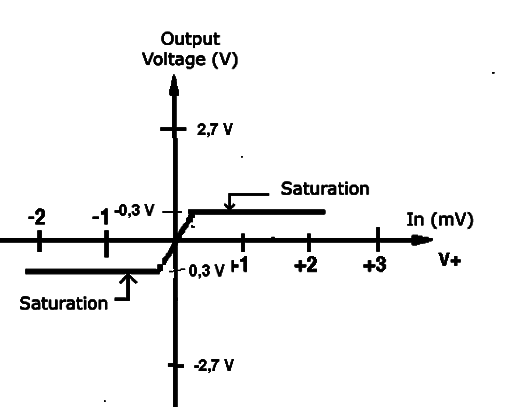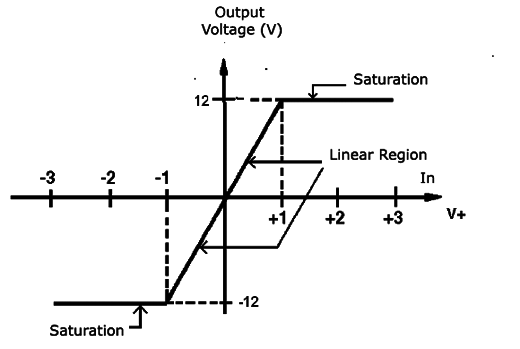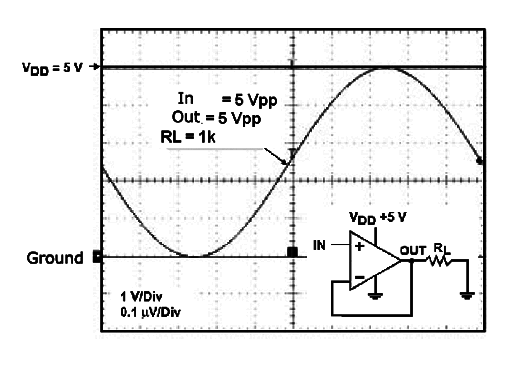The conventional operational amplifiers, as the known 741, when work on all their dynamic range of output voltages, can not reach the maximum values corresponding to the power supply voltage. So, if we power an operational of this type with a symmetrical source of 12 + 12 V, when it operates, the output signal will not tour between -12 and +12 V, but a little less, because there is always a certain loss in external components. Thus, as shown in Figure 1, the amplifier will only tour between 11.4 and -11.4 V. The small difference that prevents it reaches the voltages of the power lines, or "rail" is due to the normal internal loss.

We say, in these conditions, this operational amplifier can not get a tour of the rail-to-rail output voltage.
Modern applications
The 0.6V on each side of an operational powered with 12 + 12 V, do not mean much, and on a normal application, this difference does not affect the operation of the application. However, the current tendency is that the circuits operate at increasingly low voltages.
Thus, by feeding an operational 2.7 V, giving 1.35 V for each line, a drop of 0.6V on each side, or 1.2 V would be catastrophic! The output of the amplifier would have an amplitude of only 0.3V, which prevents the circuit operation, as shown in Figure 2.

If the operational amplifier were to drive the logic circuits, A/D converters and other more critical applications, it is absolutely necessary that the output signal can tour between the power line values, i.e. they should be able to go from line to line or rail -to-rail, as shown in Figure 3.

This need of modern circuits led the designers to create operational amplifiers with characteristics that enable their outputs have tours that goes close to the maximum values of the power lines, that is, these amplifiers have rail-to-rail output.
Several manufacturers of operational amplifiers have in their product line integrated circuit which have the characteristics rail to rail, as shown in Figure 4.

Conclusion
In applications where an operational amplifier should interface logic circuits, microcontrollers and other devices that need the signal to tour between the power line values, special types with rail-to-rail characteristics ought to be used.
These amplifiers also called RRO must have output stages specially designed so that they can provide output signals in a full dynamic range as well as have input characteristics which allow it to operate in the same band.




